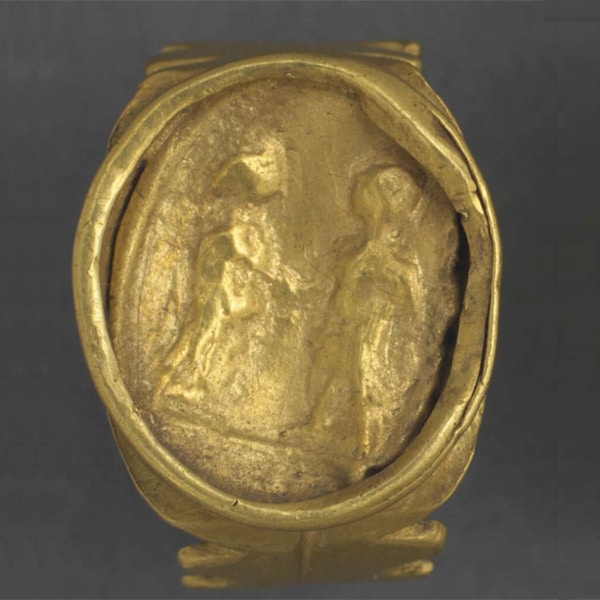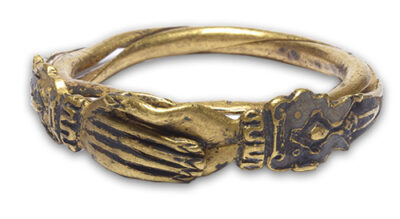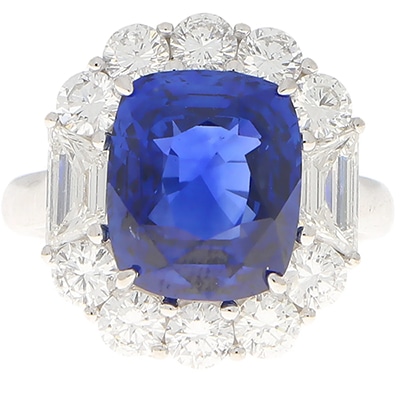Has the Covid pandemic brought you and your partner closer together? Jeweller statistics have found that the number of engagement rings sold has soared in the last two years, while there has also been a 22% increase in searches online for engagement rings.
While weddings have suffered from postponements and cancellations throughout the Covid pandemic, the promise of marriage through an engagement ring has become more valued and important to couples. There is a great deal of romance as the engagement ring promises happier times ahead. However, engagement rings haven’t always been so romantic.
In fact, engagement rings have had a fascinating history which is well worth considering when choosing your own engagement ring and what part of history you want your engagement ring to reflect!
Ancient Rome: The Beginnings Of A Tradition
The first documented use of an engagement ring began in Ancient Rome. These rings were commonly made from copper, iron and flint but may also be made from ivory or bone.
It was in Ancient Rome that the trend began for a ‘home’ ring and a ‘travel’ ring. The home ring would usually be made from iron but would be swapped for a gold ring when out in public. Nowadays, the trend is usually to opt for a lower investment ring to be worn when travelling while having the most treasured ring at home for safekeeping.
While Roman women may have been given two engagement rings, the premise behind the rings was usually far from romantic. Instead, the ring usually signified a business contract or obedience.

Pope Approval: A Symbol Of Intention
Fast forward centuries to 855, and the engagement ring was no longer seen as obedience but as a symbol of a man’s intent to marry their partner. This was declared by Pope Nicholas I, and these engagement rings were usually made from gold.
The Diamond Tradition
To this day, diamond engagement rings are the most popular choice, with 87% of brides claiming they prefer diamonds over any other gemstones in their engagement ring. However, the history books believe the first diamond engagement ring was in 1477 when Archduke Maximilian of Austria proposed to his fiancée Mary of Burgundy. As well as being encrusted with diamonds, the ring also paid homage to her name with diamonds set into a shape of an ‘M’.

Gimmel Rings: Early Trinity Rings
By the 15th century, gimmel rings were a popular choice for engagement rings. These rings were two or three rings with hoops or links that fit together to form one ring. This is still a popular trend that we know today as a trinity ring.
Gimmal rings often focused on a handclasp design; this symbolised the union between the couple and the romantic connection between partners.
Signed Engagement Rings
By the 17th century, the new trend for engagement rings was for a secret message to be engraved on the inside of the band. In this period, engagement rings were often a simpler gold band, compared to the intricacies of a gimmel ring clasp design. These rings were known as poesy rings and were the height of romance for the loving sentiment captured on the engagement band.
To this day, it is still a popular choice to opt for signed engagement rings and to have personalised engravings on the ring for that extra-special secret.
Lavish Engagement Rings
Gemstone mining and jewellery production were growing into a huge industry by Victorian times. What’s more, the concept of dowries in marriage was still an important principle. As a result, engagement rings became more lavish and expensive as it was the best way to symbolise the security of a dowry and commitment to marriage.
The Gold Rush of the time meant many Victorian engagement rings were comprised of 18k gold, while the developed tools for gemstones meant there were more options for different cuts.
Perhaps the most significant trend from the Victorian period was that engagement rings became more flamboyant and designed into symbols of prosperity. King Albert proposed to Queen Victoria with a ring in the shape of a snake, complete with an emerald. However, other popular Victorian designs included dragons, doves, spiders, crabs and foxes.
Diamonds Are Forever
In the 1940s, De Beers created the marketing campaign’ diamonds are forever’, this became synonymous with everlasting unity between romantic partners, and consequently, diamond engagement rings grew in popularity. A trend that is still popular to this day.
Less romantically, the better the ring, the greater the security for women. In the UK, there was a law that women could sue men if a man decided to break off an engagement. This was a law until 1970. Having a quality engagement ring symbolised this dowry and security. Considering a woman may be left financially ruined with a darkened reputation because of a broken engagement, having a ring to sell meant the woman would be able to survive until her reputation was restored.

Coloured Gemstone Engagement Rings
Now, in the 21st century, coloured gemstones are growing in popularity for engagement rings. The trend was cemented in 2010 when Prince William proposed to the Duchess of Cambridge. Their engagement ring was a sapphire and diamond ring that once belonged to Princess Diana.
Since then, searches for coloured stone engagement rings have grown by 10% every year. Emerald engagement rings are now the second most popular ring behind diamond rings, while sapphire follows closely behind. The design of the Duchess of Cambridge’s ring has also set a new trend in engagement rings, with the ‘halo’ design being a go-to for jewellery lovers.
Perhaps more importantly, the key trend of engagement rings now is the sentimentality behind the ring. Engagement rings tell a love story and are unique to the couple – whether it’s analysing the symbolism of the gemstones used or the backstory of the ring design, or even bespoke designs, engagement rings mean more to couples than ever before.

